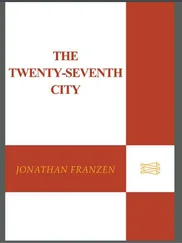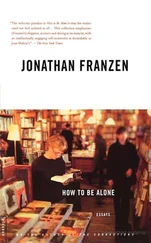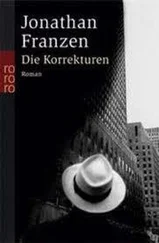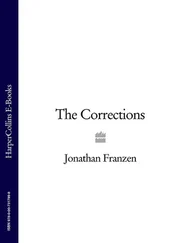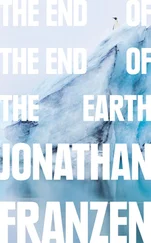Jonathan Franzen - The Discomfort Zone
Здесь есть возможность читать онлайн «Jonathan Franzen - The Discomfort Zone» — ознакомительный отрывок электронной книги совершенно бесплатно, а после прочтения отрывка купить полную версию. В некоторых случаях можно слушать аудио, скачать через торрент в формате fb2 и присутствует краткое содержание. Город: Ney York, Год выпуска: 2006, ISBN: 2006, Издательство: Farrar, Straus and Giroux, Жанр: Современная проза, на английском языке. Описание произведения, (предисловие) а так же отзывы посетителей доступны на портале библиотеки ЛибКат.
- Название:The Discomfort Zone
- Автор:
- Издательство:Farrar, Straus and Giroux
- Жанр:
- Год:2006
- Город:Ney York
- ISBN:918-0-312-94841-2
- Рейтинг книги:3.5 / 5. Голосов: 2
-
Избранное:Добавить в избранное
- Отзывы:
-
Ваша оценка:
- 80
- 1
- 2
- 3
- 4
- 5
The Discomfort Zone: краткое содержание, описание и аннотация
Предлагаем к чтению аннотацию, описание, краткое содержание или предисловие (зависит от того, что написал сам автор книги «The Discomfort Zone»). Если вы не нашли необходимую информацию о книге — напишите в комментариях, мы постараемся отыскать её.
Notable Book of the Year The Discomfort Zone
The Discomfort Zone — читать онлайн ознакомительный отрывок
Ниже представлен текст книги, разбитый по страницам. Система сохранения места последней прочитанной страницы, позволяет с удобством читать онлайн бесплатно книгу «The Discomfort Zone», без необходимости каждый раз заново искать на чём Вы остановились. Поставьте закладку, и сможете в любой момент перейти на страницу, на которой закончили чтение.
Интервал:
Закладка:
“That is an osprey,” the woman quietly affirmed.
“ God, ” I said, looking again, “it is so hard to tell in the fog, and to get a sense of scale, you know, way up there, but you’re right, yes, I see it. Osprey, osprey, osprey. Yes.”
“That’s the great thing about fog,” the woman remarked. “You can see whatever you want.”
Just then the dark-haired young woman came by with her tripod and big camera.
“Osprey,” I told her confidently. “By the way, you know, I’m still totally writhing about saying ‘teal’ when I meant ‘gadwall.’”
She stared at me. “Gadwall?”
Back in the car, using Manley’s phone to avoid betraying my own name via caller ID, I called the visitor center at Santa Ana and asked if “people” had been reporting any masked ducks on the refuge.
“Yes, somebody did report one yesterday. Down at Cattails.”
“Just one person?” I asked.
“Yes. I wasn’t here. But somebody did report a masked duck.”
“Fantastic!” I said — as if, by sounding excited, I could lend after-the-fact credibility to my own report. “I’ll come look for it!”
Halfway back to Brownsville, on one of the narrow dirt roads that Manley liked to direct me down, we stopped to admire a lushly green-girdled blue resaca with the setting sun behind us. The delta in winter was too beautiful to stay embarrassed in for long. I got out of the car, and there, silent, on the shadowed side of the water, floating nonchalantly, as if it were the most natural thing in the world — which is, after all, the way of magical creatures in enchanted places — was my black-bellied whistling-duck.
IT FELT WEIRDto return to New York. After the excitements of South Texas, I was hollow and restless, like an addict in withdrawal. It was a chore to make myself comprehensible to friends; I couldn’t keep my mind on my work. Every night, I lay down with bird books and read about other trips I could take, studied the field markings of species I hadn’t seen, and then dreamed vividly of birds. When two kestrels, a male and a female, possibly driven out of Central Park by the artist Christo and his wife, Jeanne-Claude, began showing up on a chimney outside my kitchen window and bloodying their beaks on fresh-killed mice, their dislocation seemed to mirror my own.
One night in early March, I went to the Society for Ethical Culture to hear Al Gore speak on the subject of global warming. I was expecting to be amused by the speech’s rhetorical badness — to roll my eyes at Gore’s intoning of “fate” and “mankind,” his flaunting of his wonk credentials, his scolding of American consumers. But Gore seemed to have rediscovered a sense of humor. His speech was fun to listen to, if unbelievably depressing. For more than an hour, with heavy graphical support, he presented compelling evidence of impending climate-driven cataclysms that will result in unimaginable amounts of upheaval and suffering around the globe, possibly within my own lifetime. I left the auditorium under a cloud of grief and worry of the sort I’d felt as a teenager reading about nuclear war.
Ordinarily, in New York, I keep a tight rein on my environmental consciousness, confining it, ideally, to the ten minutes per year when I write my guilt-assuaging checks to groups like the Sierra Club. But Gore’s message was so disturbing that I was nearly back to my apartment before I could think of some reasons to discount it. Like: wasn’t I already doing more than most Americans to combat global warming? I didn’t own a car, I lived in an energy-efficient Manhattan apartment, I was good about recycling. Also: wasn’t the weather that night unusually cold for early March? And hadn’t Gore’s maps of Manhattan in the future, the island half-submerged by rising sea levels, all shown that the corner of Lexington and Eighty-first Street, where I live, would stay high and dry in even the worst-case scenario? The Upper East Side has a definite topography. It seemed unlikely that seawater from Greenland’s melting ice cap would advance any farther than the Citarella market on Third Avenue, six blocks to the south and east. Plus, my apartment was way up on the tenth floor.
When I went inside, no kids came running to meet me, and this absence of kids seemed to clinch it: I was better off spending my anxiety budget on viral pandemics and dirty bombs than on global warming. Even if I had had kids, it would have been hard work for me to care about the climatic well-being of their children’s children. Not having kids freed me altogether. Not having kids was my last, best line of defense against the likes of Al Gore.
There was only one problem. Trying to fall asleep that night, mentally replaying Gore’s computer images of a desertified North America, I couldn’t find a way not to care about the billions of birds and thousands of avian species that were liable to be wiped out worldwide. Many of the Texan places that I’d visited in February had elevations of less than twenty feet, and the climate down there was already almost lethally extreme. Human beings could probably adapt to future changes, we were famously creative at averting disasters and at making up great stories when we couldn’t, but birds didn’t have our variety of options. Birds needed help. And this, I realized, was the true disaster for a comfortable modern American. This was the scenario I’d been at pains to avert for many years: not the world’s falling apart in the future, but my feeling inconveniently obliged to care about it in the present. This was my bird problem.
FOR A LONGtime, back in the eighties, my wife and I lived on our own little planet. We spent thrilling, superhuman amounts of time by ourselves. In our first two apartments, in Boston, we were so absorbed in each other that we got along with exactly one good friend, our college classmate Ekström, and when we finally moved to Queens, Ekström moved to Manhattan, thereby sparing us the need to find a different friend.
Early in our marriage, when my old German instructor Weber asked me what the two of us were doing for a social life, I said we didn’t have one. “That’s sweet for a year,” Weber said. “Two years at the most.” His certainty offended me. It struck me as extremely condescending, and I never spoke to him again.
None of the doom criers among our relatives and former friends, none of these brow-furrowing emotional climatologists, seemed to recognize the special resourcefulness of our union. To prove them wrong, we made our aloneness work for four years, for five years, for six years; and then, when the domestic atmosphere really did begin to overheat, we fled from New York to a Spanish village where we didn’t know anybody and the villagers hardly even spoke Spanish. We were like those habit-bound peoples in Jared Diamond’s Collapse who respond to an ecosystem’s degradation by redoubling their demands on it — medieval Greenlanders, prehistoric Easter Islanders, contemporary SUV buyers. Whatever reserves the two of us still had when we arrived in Spain were burned up in seven months of isolation.
Returning to Queens, we could no longer stand to be together for more than a few weeks, couldn’t stand to see each other so unhappy, without running somewhere else. We reacted to minor fights at breakfast by lying facedown on the floor of our respective rooms for hours at a time, waiting for acknowledgment of our pain. I wrote poisonous jeremiads to family members who I felt had slighted my wife; she presented me with handwritten fifteen- and twenty-page analyses of our condition; I was putting away a bottle of Maalox every week. It was clear to me that something was terribly wrong. And what was wrong, I decided, was modern industrialized society’s assault on the environment.
Читать дальшеИнтервал:
Закладка:
Похожие книги на «The Discomfort Zone»
Представляем Вашему вниманию похожие книги на «The Discomfort Zone» списком для выбора. Мы отобрали схожую по названию и смыслу литературу в надежде предоставить читателям больше вариантов отыскать новые, интересные, ещё непрочитанные произведения.
Обсуждение, отзывы о книге «The Discomfort Zone» и просто собственные мнения читателей. Оставьте ваши комментарии, напишите, что Вы думаете о произведении, его смысле или главных героях. Укажите что конкретно понравилось, а что нет, и почему Вы так считаете.


